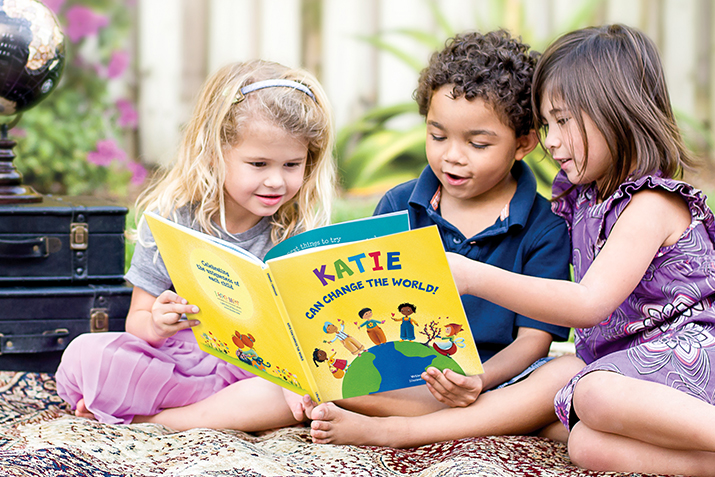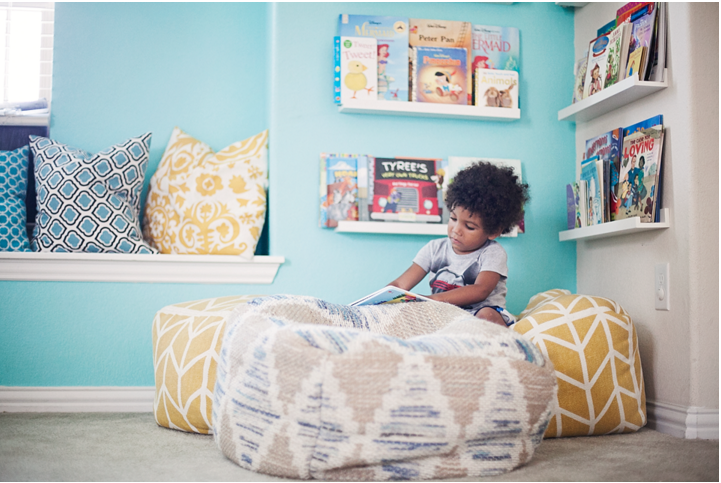
Make a Difference During National Autism Awareness Month
6 years ago 0 Comments 5.7k Views
Did you know that the month of April is National Autism Awareness Month? April is a time to promote autism awareness, autism acceptance, and to support those who are on the spectrum. One way to show your support is to wear the Puzzle Ribbon, the most recognizable symbol for the autism community. You can also participate in an autism walk with your child or donate to a nonprofit organization such as The Autism Society, Autism Speaks, or The Autism Research Foundation.
What Is Autism?
Autism, or Autism spectrum disorder (ASD), is a developmental disability that appears during early childhood and is characterized by a difficulty to communicate and interact with others. Some behaviors associated with autism include:
- A delayed learning of language
- Difficulty making eye contact
- Difficulty holding a conversation
- A lack of interest in peer relationships
- Narrow, intense interests (often a fixation on parts of objects)
- Poor motor skills
- Sensory sensitivities (for example, being over-sensitive or under-sensitive to noise, light, clothing, or temperature).
What Causes Autism?
There is no known single cause of autism, and a person diagnosed may display all symptoms or only a few. While children cannot “outgrow” autism, it is treatable—with significant improvements made when the diagnosis and treatment are conducted early.
How Do I Know If My Child Has Autism?
If you believe your child may have autism, you should consult a medical professional and have your child evaluated by a multidisciplinary team of doctors, including a pediatrician, psychologist, speech and language pathologist and occupational therapist. But according to The National Institute of Child Health and Human Development (NICHD), these five behaviors in your child should lead to further evaluation:
- Does not babble or coo by 12 months
- Does not gesture (point, wave, grasp) by 12 months
- Does not say single words by 16 months
- Does not say two-word phrases on his or her own by 24 months
- Has any loss of any language or social skill at any age
Keep in mind that even if your child exemplifies some autism-like symptoms, it does not mean that he or she has Autism Spectrum Disorder. To be diagnosed, there must be multiple symptoms that disrupt a child’s ability to communicate, engage in active and imaginative play, form relationships, explore and learn.
Reading Tips for Your Child with Autism
If your child is diagnosed with autism, he or she may struggle with learning to read or sounding out words. Below we have listed some helpful tips to overcome these challenges.
Read Together & Repetition

If your child has difficulty with speech, reading together can provide encouragement and support. Try sounding out words together as you read. Underline certain difficult words with your finger and go through each letter together until you can form the word.
As you read, discuss the book together to help build your child’s reading comprehension. If your child is mostly non-verbal, ask questions about the story and have your child tap on places in the illustrations to give an answer. Continue reading the same story repeatedly, so your child becomes familiar with the words on the page.
Interaction with a Story
Use sight, sound, and touch to help your child learn best. Try using a white board and magnetic letters to move letters around and spell what you see on the page. This will help children who learn best visually and through touch.
Other children respond best to sound, such as reading aloud. Music can also be a helpful teaching tool, such as the My Sing-Along Book and Personalized Music. Your child’s name is incorporated into classic children’s songs, such as The Wheels on the Bus” and “You are my Sunshine”—perfect for engaging an auditory learner to pick up words and recognize their own name.
Due to a child’s sensitivities, you may need to adjust your learning environment. For example, if your child is sensitive to light and sound, try reading in a dimly lit room and speak in a quiet voice. Making your child comfortable is a first step in making reading enjoyable!
Pair Words with Symbols
Create your own cards to discuss a book. For example, if you are reading a book about birthdays, such as the My Very Happy Birthday Book, create cards with images and their corresponding words such as “balloons,” “party,” “presents” and “cake.” As you read, hold up the cards that go with the story, so you child can use visual cues to learn the words.
Make Reading Personal
Some children with autism are fixated on specific subjects or objects. If your child loves trucks, try reading a storybook about trucks and vehicles such as the My Very Own Trucks personalized storybook.
Personalized books, featuring your child’s name, will help capture your child’s interest and make reading fun! If your child loves outer space, the 1-2-3 Blast Off With Me! personalized book is an engaging read that will also help teach your child letters and numbers. Your child will delight seeing his or her photo on every page and may pay closer attention to the words during storytime.
Storybooks can also offer messages of encouragement to children with autism. If your child struggles with learning or relationships, read books about empowerment and self-love to help boost your child’s confidence. Books such as ABC What I Can Be! introduce your child to different careers and show that your child can be whatever he or she wants to be! To help show your love and support, the personalized edition of I Wish You More sends good wishes to your child now and always.
I Can Change the World
For children on the Spectrum, it is important to provide support and guidance. Many children and adults with autism have made an important impact on our world, and serve as positive role models. Temple Grandin is an internationally famous spokesperson for autism and has achieved success designing livestock handling facilities that reduce stress on animals. Satoshi Tajiri, diagnosed with Asperger’s Syndrome, turned his obsession with bug collecting into the globally popular game Pokémon. The famous composer Mozart was also thought to have autism, with intense and sensitive hearing to loud sounds. With these examples and many more, it’s true that any child, with determination and hard work, can change the world!

Resources
http://www.autism-society.org/get-involved/national-autism-awareness-month/
https://www.helpguide.org/articles/autism-learning-disabilities/autism-spectrum-disorders.htm
http://www.autism-society.org/
https://www.autismspeaks.org/blog/2017/12/26/five-tips-helping-nonverbal-children-autism-learn-read
https://blog.allaboutlearningpress.com/teach-reading-autistic-child/
https://www.autismspeaks.org/news/news-item/answerscom039s-list-famous-people-living-autism





